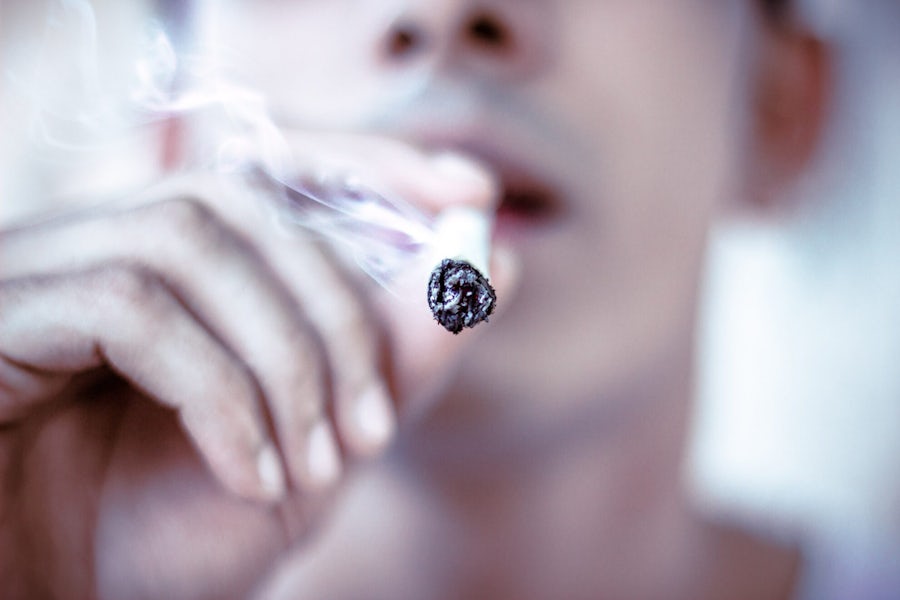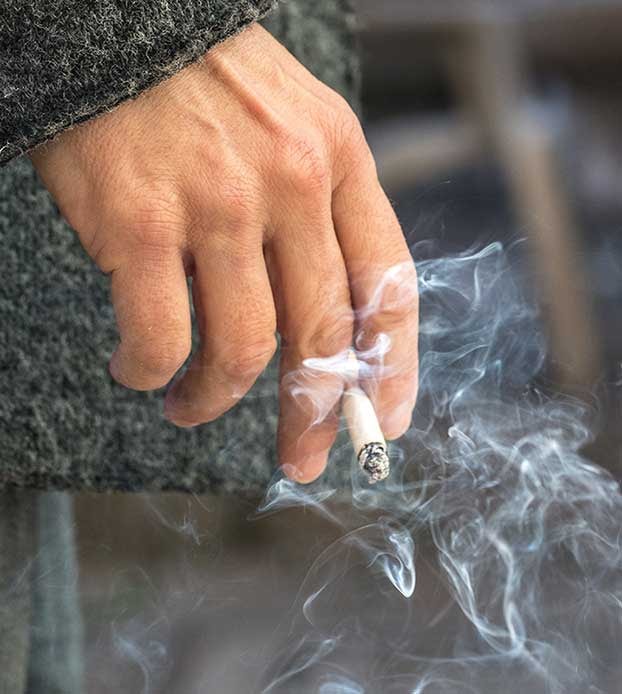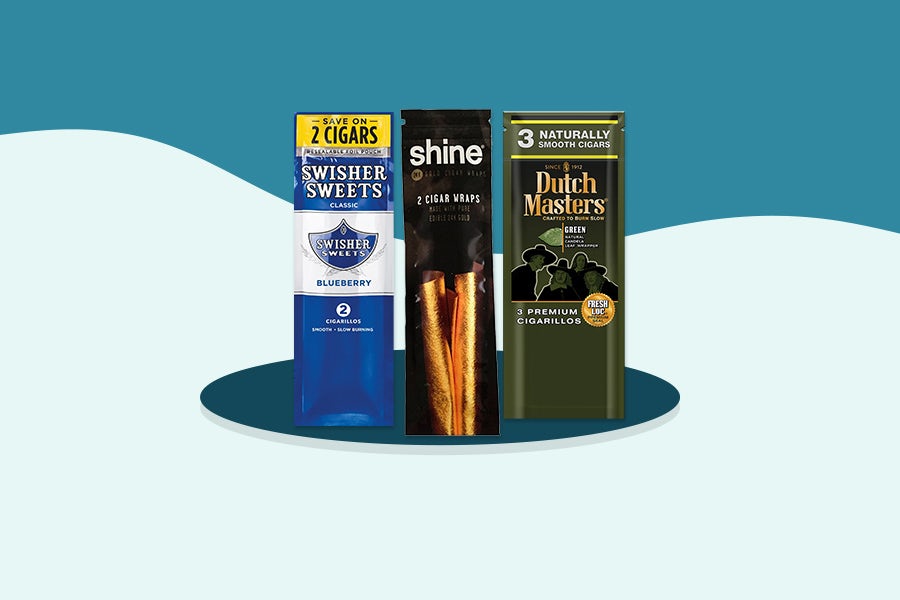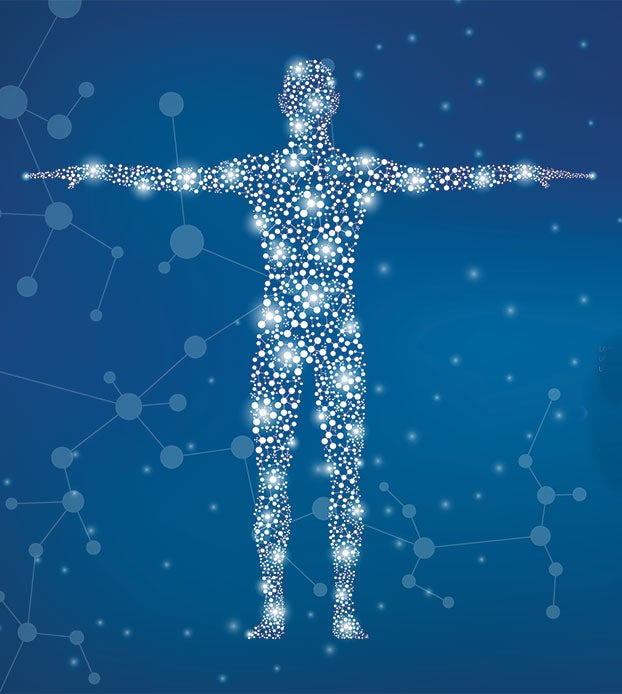Mixing cannabis and nicotine isn’t uncommon – especially in Europe, Australia and Israel. Many people enjoy mixing the two substances to create a unique “high”; some swear it heightens the effects of THC while others claim to not feel much from weed without nicotine. How do these two substances interact in the body and brain, and what can you expect from combining them?
Why people mix cannabis and nicotine
Mixing tobacco or nicotine products in with your weed isn’t a new practice. Stoners have been mixing for decades, rolling herbal spliffs in rolling paper, and using tobacco wraps to make blunts. In scientific studies, this is sometimes referred to as mulling. 1
Tobacco and cannabis are two of the most widely consumed substances in the world, and there is significant overlap in their use. Some people enjoy combining both into one paper while others light up one immediately after the other. Some 90% of cannabis consumers report being cigarette smokers at some point, compared to just 47% of non-cannabis consumers. 2
Tobacco can be mixed in with cannabis to stave off nicotine withdrawals in smokers or simply to create an intoxicating experience that many argue differs from either substance alone.
What happens when you mix nicotine and weed?
Cannabis and tobacco are both psychoactive substances, producing an effect in the brain. Both are chemicals released by the body to help cell communication – known as neurotransmitters that interact with receptors within our bodies and nervous system. Nicotine specifically triggers specific acetylcholine receptors, which are densely located in the same parts of the brain as the endocannabinoid system’s CB1 receptors. As the master regulatory system, it is hypothesized that the endocannabinoid system is intertwined and interconnected with the parts of the brain that respond to nicotine in tobacco. 3
Weed and nicotine have a few overlapping effects. Both are relied on to help with stress and anxiety. And their differing effects may be complementary; nicotine is known to improve cognition, which is opposite of THC’s effect, and some evidence combining the two may reduce the brain fog from THC. 4
Altered effects of cannabis
Smoking the two substances together may reduce the intoxicating feelings of THC. A small study of 24 participants found that joints produced stronger feelings of self-reported intoxication than blunts did. Researchers noted that blunts had higher carbon monoxide levels, which may create a delayed intoxication effect.
However, the opposite may also be true. A self-reported survey of 112 participants identified that “lifetime sequential co-use practices and more frequent nicotine vaping were associated with enhancing the intoxicating effects of cannabis.” 5 6
May increase cannabis consumption
Using nicotine in conjunction with cannabis may increase cannabis consumption (but not nicotine consumption).
A preclinical animal study concluded that nicotine may “enhance reinforcement of other drugs” and that using both nicotine and cannabis may increase cannabis use. Researchers also noted that the reinforcement-enhancing abilities of nicotine “effect occurs specifically when nicotine is administered alongside the cannabinoid. Interestingly, cannabinoid use did not promote nicotine intake, suggesting this mechanism of reinforcement is specific to nicotine.” 7
Changes in connections in brain
Regular consumption of any psychoactive substance can change the connections in your brain. Interestingly, combining nicotine and cannabis may have a different effect on the brain than just consuming one or the other.
A 2019 study found that nicotine and cannabis have “interactive effects” on the brain and that the combination of the two “can produce effects that differ from the sum of the drugs’ individual effects.” Researchers took brain images of cannabis users, nicotine users, combination users, and non-users. They found that while individual users of cannabis or nicotine had reduced connectivity in certain networks, users of both substances had connections “comparable to nonusers in all networks.” In other words, it may be the balancing effects of consuming both nicotine and THC that leads so many cannabis smokers to also use tobacco. 8
Nicotine and the endocannabinoid system
Nicotine also interacts with the endocannabinoid system. A 2008 study found that “endocannabinoids play a role in the rewarding properties of nicotine as well as nicotine dependence liability.” Researchers identified that by blocking the enzyme fatty acid amide hydrolase (FAAH), which is responsible for breaking down anandamide, they could increase nicotine-seeking behavior in mice. In other words, researchers have identified the endocannabinoid system as playing an important role in regulating addicting effects of nicotine. 9
Recent studies have identified the endocannabinoid receptor CB1 as playing an important role in the reinforcing effects of nicotine. Some animal studies have tested CB1 antagonists (blockers) to reduce self-administered nicotine consumption. These antagonists are blockers of the same site that anandamide activates in the ECS, and when these blockers are given addictive behavior is less prevalent.
Research has consistently found that the CB1 receptor is important in addictive behaviors, especially nicotine. A 2015 study found that “CB1 receptors are critically involved in mediating nicotine reward/reinforcement…[and] also seem to be involved in mediating cue and nicotine priming reinstatement of nicotine-seeking behavior.” 10
The mechanisms of the CB2 receptor are less clear, with some studies pointing to no role in nicotine’s effects and others suggesting the opposite. Overall there is reason to believe that CB2 may be related to other addictions, but play very little role in nicotine addiction. The authors of the 2021 review concluded that there is “an important role for the endogenous cannabinoid system in the modulation of the addictive properties of nicotine.”
Increased risks of combining nicotine and cannabis
Lung cancer
While the link between nicotine and lung cancer is straightforward, the correlation is not direct for cannabis. Cannabis smoke does contain many of the same carcinogens as nicotine smoke, but does not have a direct link to cancer, including lung and throat.
Smoking nicotine and cannabis together is also associated with increased risks. While cannabis has cannabinoids that show anti-cancer properties in preclinical trials, these do not cancel out the properties of nicotine that can promote cancer cell growth. 11
However, frequent cannabis use is linked with chronic coughing as well as bronchitis, and combining cannabis and nicotine has a “markedly elevated risk of respiratory distress, compared with cannabis use or tobacco use alone” The risk of lung cancer is elevated for people who smoke both cannabis and nicotine. 12
Throat cancer
Like lung cancer, there is no clear association between cannabis and throat cancer. While nicotine has a clear correlation to many cancers, including the throat, the same is not true with cannabis. However, this risk factor changes when the substances are combined.
Chronic cannabis use is linked to many health issues, and there is only a small reduction in carcinogens for inhaled cannabis smoke compared to nicotine. Despite the exposure to carcinogen in cannabis smoke, smoking cannabis alone (without tobacco) does not appear to increase the risk of throat cancer. This is likely because nicotine in tobacco smoke affects cells in the body very differently than THC from cannabis smoke. 13 14
Cardiovascular disease
It is estimated that nearly two million people die from heart disease every year caused directly from tobacco; an astounding number. Cannabis is much safer than this, but it is not without its own heart risks. THC is known to increase heart rate and has been associated with abnormal heart rhythms, and there are even a few reports of strokes immediately following cannabis consumption. 15 16
The concerns really compound when cannabis is regularly combined with tobacco. Because THC can alter the way the heart beats, and the toxins in tobacco smoke can seriously stress the heart, smoking both cannabis and tobacco together is likely to stress the heart more than either alone. 17
Addiction
Both nicotine and THC can be addicting. Both lead to a change in dopamine activity in the reward circuitry of the brain. This jolt of dopamine is short lived, and can create a “need” to consume again in order to feel happy, euphoric, or even pleasant. As is the case, people can build a tolerance to both substances, which increases the necessary amount consumed to get the desired effects. This in turn increases the frequency of consumption, as well as the amount. 18
Of course, like all things, addiction occurs on a spectrum. While both cannabis and tobacco may both have addictive properties – only one of these substances is seriously harming people who consume it regularly. It is also important to consider that nicotine is the primary addicting chemical in tobacco, but most of the harms identified thus far from smoking appear to be related to toxins in found in the smoke and not the nicotine, per se. 19
Can cannabis help you quit smoking?
While smoking high-THC (type I) cannabis has been associated with more tobacco smoking, CBD and other phytocannabinoids may hold benefits in combating addiction. In rodent trials, CBD blocked nicotine withdrawal symptoms, suggesting have the potential to make quitting easier. There are also some preclinical animal studies that THCV (specifically delta-8 THCV) may play a role in reducing cravings and preventing nicotine withdrawal when stopped. 20 21
Additionally in certain parts of the world like Switzerland, low-THC cannabis (Type III) is commonly being marketed as a smoking cessation aid or substitute. Given the dangers of smoking tobacco, this would be a step in the right direction for most smokers. However at this time it appears most of the hemp cigarette smokers continue to also co-smoke tobacco, essentially defeating the purpose. 22
Bottom line on cannabis and nicotine
Combining weed and nicotine, while common, is not recommended. The two substances together create a unique experience, which may even help to keep balance in the brain. However, consuming tobacco is known to carry serious risks of cancer and lung disease, and for that reason is not recommended for regular use, with or without cannabis.
Sources
- Akbar, S. A., Tomko, R. L., Salazar, C. A., Squeglia, L. M., & McClure, E. A. (2019). Tobacco and cannabis co-use and interrelatedness among adults. Addictive behaviors, 90, 354–361. https://doi.org/10.1016/j.addbeh.2018.11.036
- Agrawal A, Budney AJ, Lynskey MT. The co-occurring use and misuse of cannabis and tobacco: a review. Addiction. 2012 Jul;107(7):1221-33. doi: 10.1111/j.1360-0443.2012.03837.x. Epub 2012 Apr 17. PMID: 22300456; PMCID: PMC3397803.
- Gamaleddin, I. H., Trigo, J. M., Gueye, A. B., Zvonok, A., Makriyannis, A., Goldberg, S. R., & Le Foll, B. (2015). Role of the endogenous cannabinoid system in nicotine addiction: novel insights. Frontiers in psychiatry, 6, 41. https://doi.org/10.3389/fpsyt.2015.00041
- Saravia R, Ten-Blanco M, Pereda-Pérez I, Berrendero F. New Insights in the Involvement of the Endocannabinoid System and Natural Cannabinoids in Nicotine Dependence. International Journal of Molecular Sciences. 2021; 22(24):13316. https://doi.org/10.3390/ijms222413316
- Cooper ZD, Haney M. Comparison of subjective, pharmacokinetic, and physiological effects of marijuana smoked as joints and blunts. Drug Alcohol Depend. 2009 Aug 1;103(3):107-13. doi: 10.1016/j.drugalcdep.2009.01.023. Epub 2009 May 14. PMID: 19443132; PMCID: PMC2776770.
- Smith, D.M., Kozlowski, L., O’Connor, R.J. et al. Reasons for individual and concurrent use of vaped nicotine and cannabis: their similarities, differences, and association with product use. J Cannabis Res 3, 39 (2021). https://doi.org/10.1186/s42238-021-00097-7
- Stringfield SJ, Sanders BE, Suppo JA, Sved AF, Torregrossa MM. Nicotine enhances intravenous self-administration of cannabinoids in adult rats. Nicotine Tob Res. 2022 Nov 25:ntac267. doi: 10.1093/ntr/ntac267. Epub ahead of print. PMID: 36426873.
- Filbey, F. M., Gohel, S., Prashad, S., & Biswal, B. B. (2018). Differential associations of combined vs. isolated cannabis and nicotine on brain resting state networks. Brain structure & function, 223(7), 3317–3326. https://doi.org/10.1007/s00429-018-1690-5
- Merritt LL, Martin BR, Walters C, Lichtman AH, Damaj MI. The endogenous cannabinoid system modulates nicotine reward and dependence. J Pharmacol Exp Ther. 2008 Aug;326(2):483-92. doi: 10.1124/jpet.108.138321. Epub 2008 May 1. PMID: 18451315; PMCID: PMC2746999.
- Gamaleddin IH, Trigo JM, Gueye AB, Zvonok A, Makriyannis A, Goldberg SR, Le Foll B. Role of the endogenous cannabinoid system in nicotine addiction: novel insights. Front Psychiatry. 2015 Mar 25;6:41. doi: 10.3389/fpsyt.2015.00041. PMID: 25859226; PMCID: PMC4373509.
- Melamede R. (2005). Cannabis and tobacco smoke are not equally carcinogenic. Harm reduction journal, 2, 21. https://doi.org/10.1186/1477-7517-2-21
- Calabria B, Degenhardt L, Hall W, Lynskey M. Does cannabis use increase the risk of death? Systematic review of epidemiological evidence on adverse effects of cannabis use. Drug Alcohol Rev. 2010 May;29(3):318-30. doi: 10.1111/j.1465-3362.2009.00149.x. PMID: 20565525.
- Moir, D., Rickert, W. S., Levasseur, G., Larose, Y., Maertens, R., White, P., & Desjardins, S. (2008). A comparison of mainstream and sidestream marijuana and tobacco cigarette smoke produced under two machine smoking conditions. Chemical research in toxicology, 21(2), 494–502. https://doi.org/10.1021/tx700275p
- Yu-Hui Jenny Huang, Zuo-Feng Zhang, Donald P. Tashkin, Bingjian Feng, Kurt Straif, Mia Hashibe; An Epidemiologic Review of Marijuana and Cancer: An Update. Cancer Epidemiol Biomarkers Prev 1 January 2015; 24 (1): 15–31. https://doi.org/10.1158/1055-9965.EPI-14-1026
- Latif, Z., & Garg, N. (2020). The Impact of Marijuana on the Cardiovascular System: A Review of the Most Common Cardiovascular Events Associated with Marijuana Use. Journal of clinical medicine, 9(6), 1925. https://doi.org/10.3390/jcm9061925
- Gómez Ochoa S. A. (2021). Stroke and cannabis use in patients with no cardiovascular risk factors: a systematic review of case reports. Ictus y consumo de cannabis en pacientes sin factores de riesgo cardiovascular: revisión sistemática de casos clínicos. Neurologia, 36(3), 222–228. https://doi.org/10.1016/j.nrl.2017.09.016
- Lorenz, D. R., Misra, V., Chettimada, S., Uno, H., Wang, L., Blount, B. C., De Jesús, V. R., Gelman, B. B., Morgello, S., Wolinsky, S. M., & Gabuzda, D. (2021). Acrolein and other toxicant exposures in relation to cardiovascular disease among marijuana and tobacco smokers in a longitudinal cohort of HIV-positive and negative adults. EClinicalMedicine, 31, 100697. https://doi.org/10.1016/j.eclinm.2020.100697
- Viveros, M. P., Marco, E. M., & File, S. E. (2006). Nicotine and cannabinoids: parallels, contrasts and interactions. Neuroscience and biobehavioral reviews, 30(8), 1161–1181. https://doi.org/10.1016/j.neubiorev.2006.08.002
- Nutt, D. J., Phillips, L. D., Balfour, D., Curran, H. V., Dockrell, M., Foulds, J., Fagerstrom, K., Letlape, K., Milton, A., Polosa, R., Ramsey, J., & Sweanor, D. (2014). Estimating the harms of nicotine-containing products using the MCDA approach. European addiction research, 20(5), 218–225. https://doi.org/10.1159/000360220
- Smith, L. C., Tieu, L., Suhandynata, R. T., Boomhower, B., Hoffman, M., Sepulveda, Y., Carrette, L. L. G., Momper, J. D., Fitzgerald, R. L., Hanham, K., Dowling, J., Kallupi, M., & George, O. (2021). Cannabidiol reduces withdrawal symptoms in nicotine-dependent rats. Psychopharmacology, 238(8), 2201–2211. https://doi.org/10.1007/s00213-021-05845-4
- Xi, Z. X., Muldoon, P., Wang, X. F., Bi, G. H., Damaj, M. I., Lichtman, A. H., Pertwee, R. G., & Gardner, E. L. (2019). Δ8 -Tetrahydrocannabivarin has potent anti-nicotine effects in several rodent models of nicotine dependence. British journal of pharmacology, 176(24), 4773–4784. https://doi.org/10.1111/bph.14844
- Bertholet N, Marmet S, Wicki M, Gmel G, Studer J. Prevalence, modes of administration and motives for cannabidiol use in young Swiss men. Swiss Med Wkly [Internet]. 2021 Dec. 20 [cited 2023 Mar. 20];151(5152):w30054. Available from: https://smw.ch/index.php/smw/article/view/3127
Sign up for bi-weekly updates, packed full of cannabis education, recipes, and tips. Your inbox will love it.

 Shop
Shop Support
Support



















I used cannabis to quit smoking cigarettes back in 1994. It was pretty easy too. Every time I had the urge to smoke a cigarette I would just smoke some cannabis.
Yes I’m still a cannabis user.